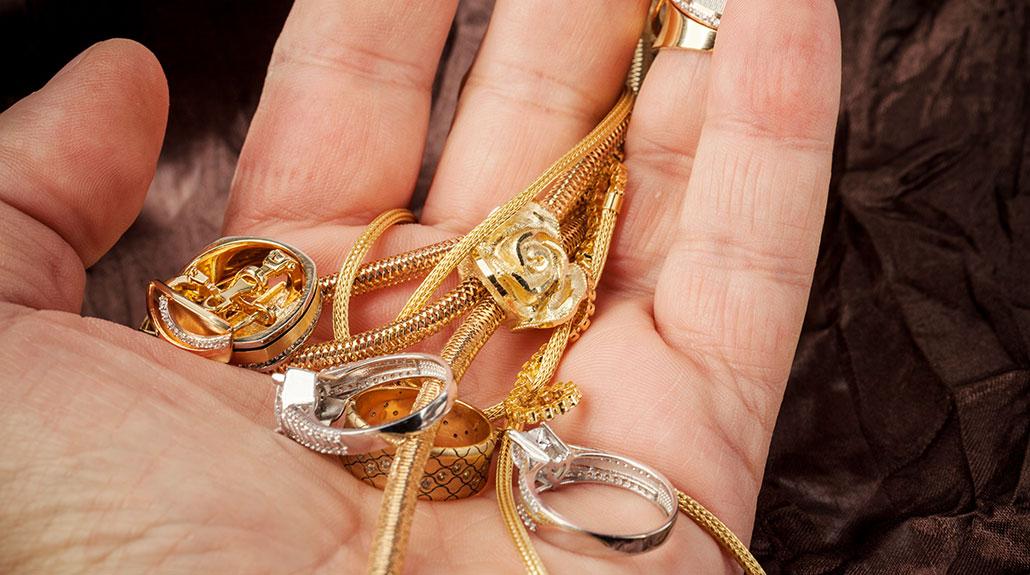As one of the most sought-after commodities, gold remains a popular choice when people are looking for sustainable investment. Because of its rarity and value, gold is often counterfeited and made to appear more expensive than it actually is. Although there are jewelers who can help you test the authenticity of your gold item, it can be useful to know how to do it yourself. Here are some tests you can perform at home to find out if you have real gold.
Look for a Hallmark
Hallmarks are small stamps that indicate the karat weight of the gold. They are one of the best ways to determine if the gold you have purchased is genuine. Depending on the location, there are different ways to display a hallmark number. If your gold item does not have a hallmark, it may mean that it does not contain real gold. Also look for letter marks such as GF, GEP, or GP that indicate the item is not real gold. These may refer to gold-filled, gold electroplated, or gold-plated items such as flatware and jewelry, which are often made of another metal with a thin layer of gold on top.
Test with Nitric Acid
Noble metals, like gold, are resistant to corrosion, oxidation, and acid. Make a small scratch or visible mark in the top layer of your item and apply nitric acid to it. If the mark does not turn green or milky and there is no reaction, your item is real gold. If it has great personal value to you, you should have this test done by a professional jeweler to avoid damage.
Test the Item's Density
For this testing method, you will need to weigh your item and record its weight in grams. Find a container that you fill with water and observe how full it is in milliliters. Lower your item into the container and note the new water level. Finally, subtract the before measurement from the after measurement and divide the weight of the jewelry by the difference in water levels.
The standard density of real gold is 19.3 grams per milliliter. If the calculated value of the density of your item is very close to this value, it is probably real gold.
Test with a Ceramic Tile
You will need an unglazed ceramic tile to rub your item against. If you scratch it with a piece of real gold, you will leave a gold mark or trail. This test requires you to scratch your item, but you should get the results with minimal damage.
Use a Strong Magnet
Gold is not magnetic, and you can test this by purchasing a magnet to see if it attracts your item. Most kitchen magnets are not strong enough for this method, so you may need to get a magnet from your local hardware store.While these at-home tests can give you an indication of whether or not your item is real gold, the only foolproof method is to take it to a reputable jeweler. Jewelers have a wide range of gold content authenticity testing methods available to the public. If you would like to have your gold professionally appraised, visit AGR Gold. With quick and easy processes for buying, selling, storing, and evaluating your precious metals, AGR Gold has you covered.
